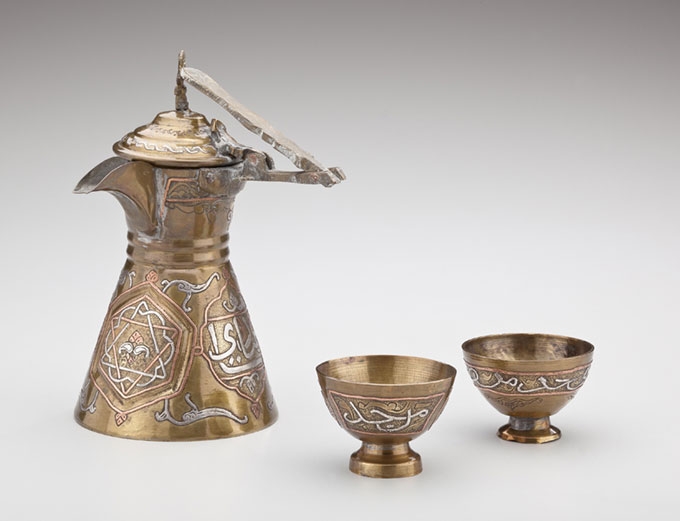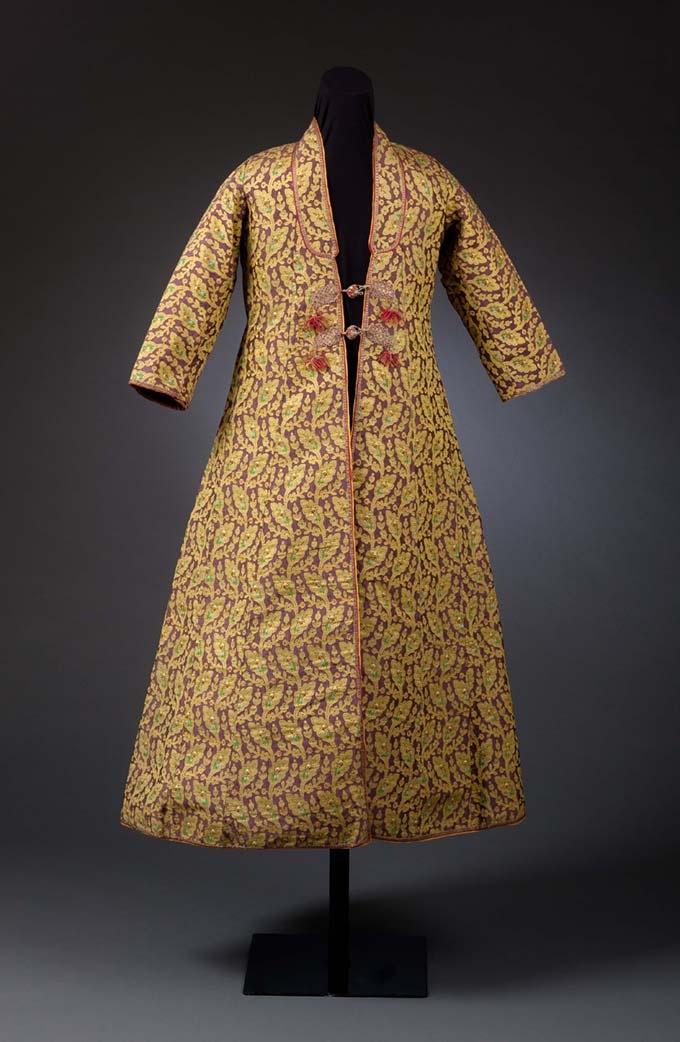Wondrous Worlds: Art and Islam through Time and Place
–
The history and breadth of Islamic art takes center stage in this landmark exhibit on loan from the Newark Museum. The more than 100 works on display in Wondrous Worlds reflect aspects of faith, culture, and everyday life of Muslims across the world and throughout the ages.
The exhibition features works in nearly all media, including carpets, costumes, jewelry, ceramics, glassware, metalworks, prints, paintings and photographs. Contemporary works from artists such as Rachid Koraichi and Victor Ekpuk, and modern day calligraphy by Hassan Massoudy are shown with pieces dating back to the 9th-century. Highlights range from dazzling lustrewares of Iran and Spain to delicate prayer rugs from Turkey and India, as well as Harem #1 from the bi-national Moroccan-American photographer Lalla Essaydi and a majestic pair of early-20th-century Egyptian appliqué tent hangings—measuring 10 feet high and 6 feet wide—that were acquired in Egypt in 1929 by John Cotton Dana, the Newark Museum’s founding director and museum education pioneer.

Inscribed Coffeepot and Cups. Algeria, early 20th century. Brass, copper, silver. Newark Museum. Purchase, 1928, 28.452, 28.454A,B.
“John Cotton Dana focused on making relevant connections between objects and people’s lives, while providing inspiration to artists, artisans and makers across disciplines,” said Steven Kern, Newark Museum Director and CEO. “Through this exhibition, audiences will gain a more nuanced understanding and appreciation for Islamic art along with other multi-cultural art forms they may encounter in the future.”
The exhibition features a world map populated with select items that demonstrate the intercontinental reach of the Dar al-Islam or Islamic World—touching all continents except Antarctica.
“Most Islamic art exhibitions focus on works from the Middle East, North Africa or South Asia, but this exhibition includes a much larger scope,” said Dr. Katherine Anne Paul, Curator of the Arts of Asia at the Newark Museum and lead curator of the exhibition. “We showcase works from Southeast Asia, the Americas as well as East and West Africa.”

Man’s Sawari Coat with Boteh and Woven Floral Motifs. India, Kashmir, late 18th or early 19th century, Mughal Period (1526—1857). Tapestry-woven silk, metal-wrapped threads. Newark Museum. Gift of Mrs. August Gilbert Buse, 1965, 65.67.
Wondrous Worlds opens with an introduction to the Five Pillars of Islam—Declaration of Faith, Daily Prayers, Charity, Fasting for Ramadan, and the Hajj Pilgrimage—to provide context and a distinctive view into the function, artistry and cultural histories of the objects. The exhibition then expands upon five themes:
Internationalisms—Then and Now highlights the long history of inter-continental trade and the role that the Hajj pilgrimage plays in promoting international interconnections. The trade of Turkish textiles to Morocco, English and Dutch textiles inspired by Indonesian prints that were exported to Africa, as well as ceramics traded between China, Iran, and Turkey are featured in this section.
Quran, Calligraphy and Book Arts delves into the power of the written word, not only through the Quran but also through histories and poetry written in diverse scripts representing different languages including Arabic, Farsi, Nsibidi, Turkish, and Urdu.
Hospitality: Fasting, Feasting, and Fun celebrates the domesticated arts. A mise-en-scene installation of a Moroccan feast boasts a Rabat carpet, leather cushions, wooden screen and metal table settings. Glorious ceramics, paintings, and musical instruments from other regions are also included.
Architecture and Its Offspring glories in architectural legacies displayed in carpets, printed textiles, furniture, tile-works, and historic and contemporary photographs of India and Morocco.
Body Beautiful: Costumes, Fashion, and Faith positions silk, velvet, and sequined costumes and textiles alongside fabulous jewelry fashioned from diamonds, pearls, emeralds, jade, gold, and silver.
The exhibition is sponsored in part by the Coby Foundation, the National Endowment for the Arts, and the NJ Council on the Humanities. Special thanks go to The Andrew W. Mellon Foundation and the E. Rhodes and Leona B. Carpenter Foundation for support of curatorial and conservation activities related to the exhibition. At Middlebury, the installation is supported by the Christian A. Johnson Memorial Fund.
